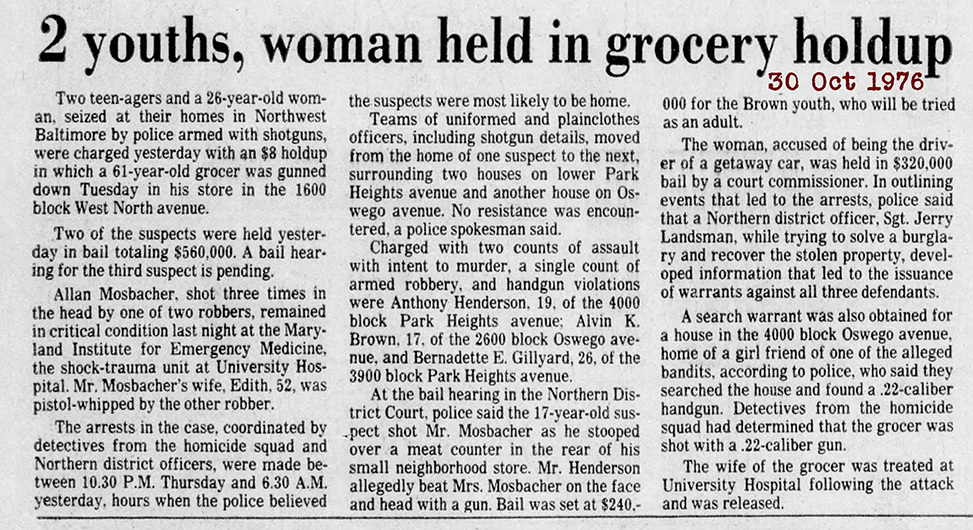These are not part of the history sites public pages, if you found this page, it is intended for Ken's research
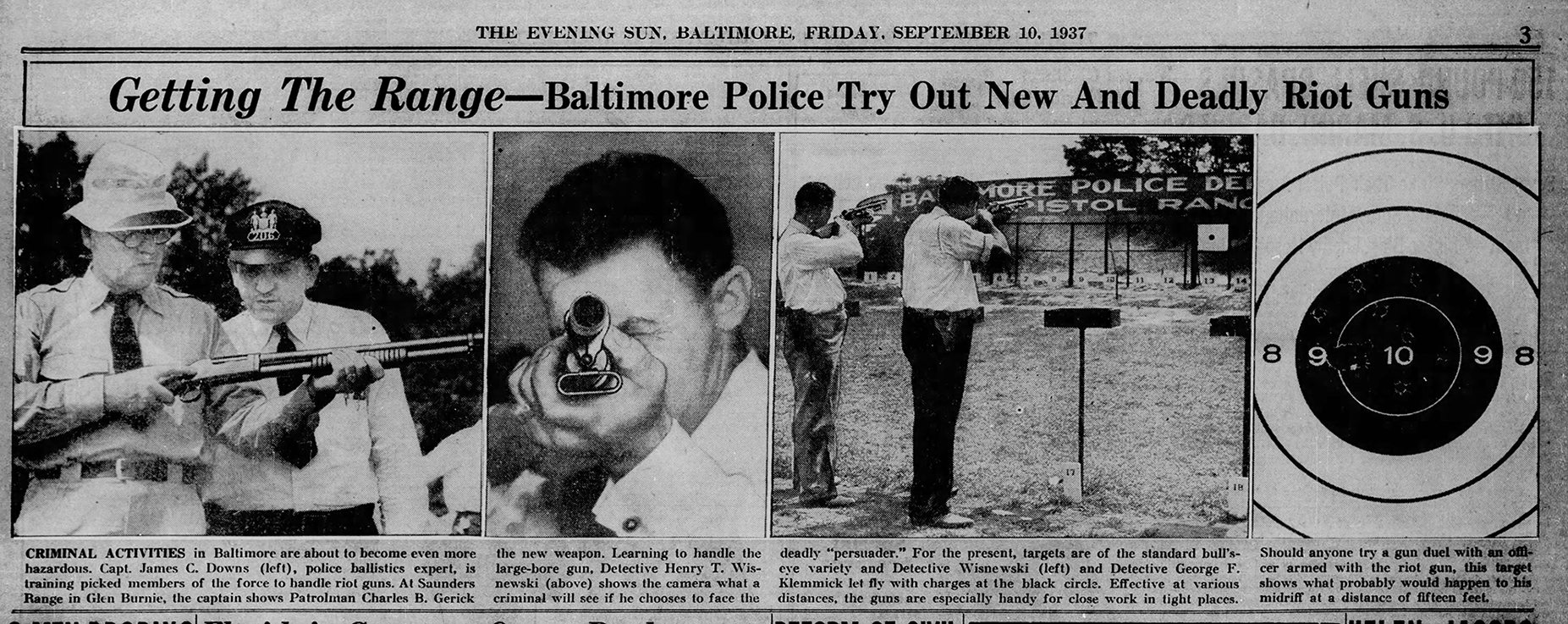
Click HERE or the Above Pic to See Fullsize Article
Saunders Range
Saunders Range, named for Adjutant General of the Maryland National Guard, John S. Saunders, opened in 1904 on the property now known as Harundale. It was established for the training of army, navy and guard personnel in shooting and marksmanship. Men were assigned by company to spend two or three days at the site gaining proficiency with rifles and revolvers, aiming at targets set 200, 400, 800 and 1000 yards away. The training season ran from May 1 to about mid-August after which the site closed for the winter.
Practice began at 8:15 a.m. and ended at 6:00 p.m. with a one-hour break for lunch. Men lived in tents on the ground with few amenities at first. The year after the range was established, a canteen was added with a “No Intoxicants” policy strictly enforced. Emil E. Vanous and his brother, William, local residents were awarded the contract to run the establishment. In the following years an administration building was erected, and a sewage system was installed in 1910.
The site was ideally located in open country with sandy soil providing good drainage and a plentiful artesian water supply. It was close to the B&A Short Line Railroad which provided transportation and to Furnace Branch Creek which provided recreation for the men. Even at the time, “open country” was a debatable term. Mr. Osborn S. Pumphrey who owned a large farm in Marley, complained vociferously that bullets from the range were striking his house and he could not hire laborers for the fields since they feared being shot. Changes to target siting seems to have remedied the situation.
While the nearby railroad offered easy transportation to both Annapolis and Baltimore, few passes were given to the soldiers for fear of their bringing back “diseases contracted in the city.” Instead, evening entertainments were supplied within the camp. Shows with singing, music and “moving pictures” were offered along with boxing matches between companies. Shooting competitions were also held with medals and cups awarded to the best marksman.
In 1915, as the World War loomed, mobilization of civilians began. Classes of recruits were sent to Saunders Range for an introduction to military regulations, physical drills and shooting practice.
Saunders Range closed in 1926 and the Maryland National Guard put the property up for sale. In 1939, a proposal to build a “Negro housing development” on the site was met by spirited local opposition and soon abandoned. Finally, in 1946, the property was acquired by Byrne Communities, Inc. and in 1947 ads began to appear in local newspapers offering homes for sale in the new development of Harundale.
Information on Saunders Range came to us from Ann Arrundell County Historical Society


Winchester Model 1897
The Model 1897 was a superior slide-action exposed hammer shotgun that was specifically designed for the new smokeless powder. Winchester manufactured just shy of one million Model 1897 shotguns, with the production taking place from July 1897 to September 1957. The Model 1897 was an improved redesign of the older Model 1893. Serial numbers were a continuation of the Model 1893 and began in the 34150 range, and continued through 1024701
The Model 1897 was originally offered in solid frame 12 gauge only with a 2 ¾ chamber until April of 1898 when the Take Down was introduced. The new 16 gauge with a 2 9/16” chamber was introduced in 1899, Take Down only.
The Model 1897 was offered in a variety of grades: standard Field; Fancy; Standard Trap; Special Trap; Pigeon; Tournament; Brush; Riot and Trench Gun. The 20” barrel Riot and Trench Guns were especially desirable for Military and Law enforcement use. The Law enforcement Riot and Trench Guns may have police or prison unit markings. The WW II military Riot and Trench guns will have “U.S” and flaming ordnance bomb markings. Trench guns differed from Riot guns in that they have a ventilated heat shield and a bayonet stud attachment. All Trench Guns and the military Riot Guns were equipped with sling swivels. The WW I Trench and Riot Guns were made in solid frame only, then for WW II, they were all Take Downs.
Shotguns were first put in radio patrol cars in 1937 the shotgun used at the time was the Winchester 1897. They only had 47 radio cars citywide at the time, training for the shotgun was done at Saunders Range in Glen Burnie. If officers couldn't qualify, they would be sent back to foot patrol and someone else would be given a chance. Training for qualification began on 21 Aug 1937
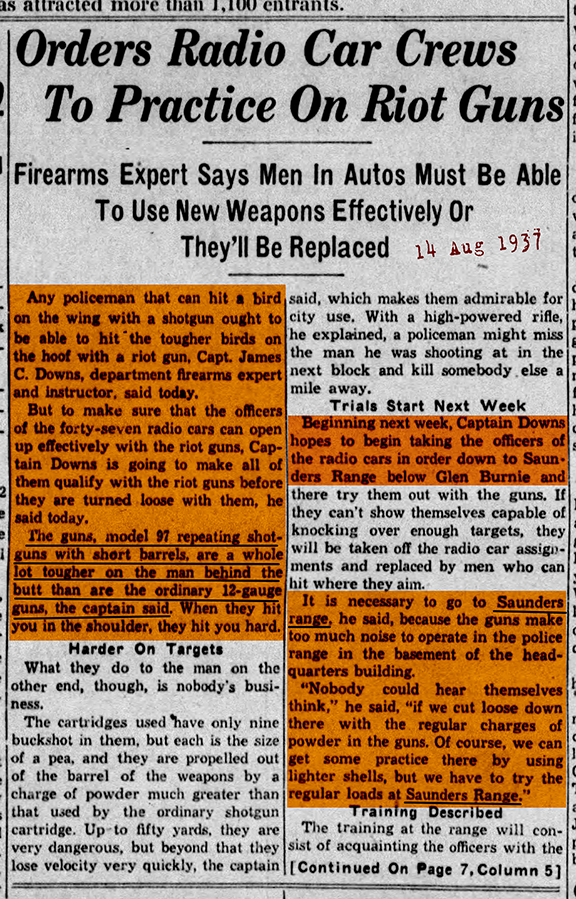 To read the above article in full size click HERE or on the article
To read the above article in full size click HERE or on the article

To read the above article in full size click HERE or on the article


To read the above artical in full size click HERE or on the above article
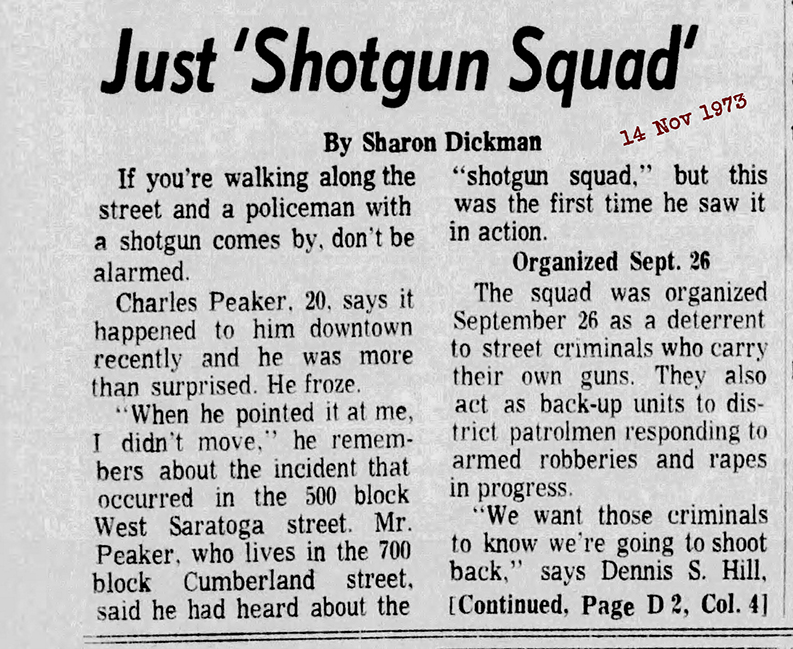
To read the above artical in full size click HERE or on the above article
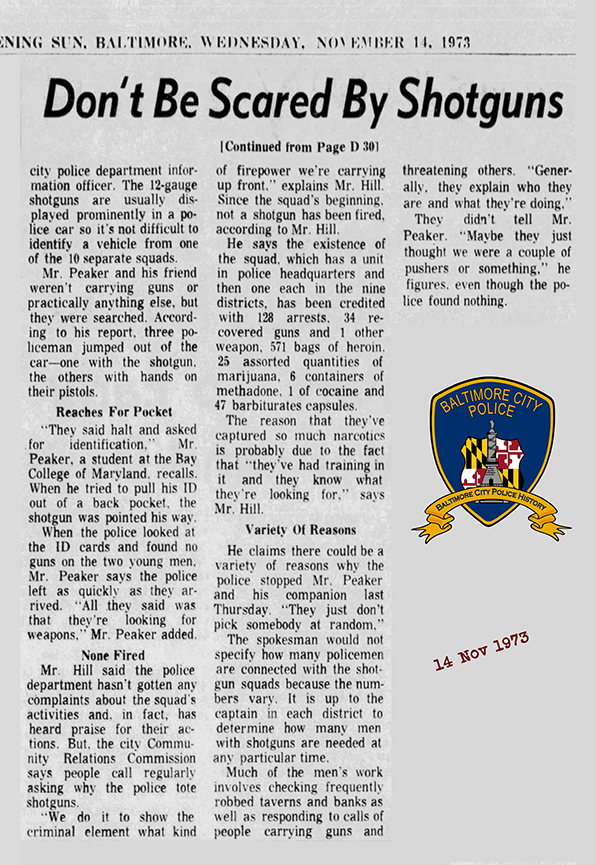
To read the above artical in full size click HERE or on the above article

To read the above artical in full size click HERE or on the above article
To read the above artical in full size click HERE or on the above article
To read the above artical in full size click HERE or on the above article
These links are mostly stories about the CIO Squad... Samuel Monkhouse was a member of the squad, he was shot in the line of duty back in 1930 had a bullet in his chest until 1952 when it shifted and needed to be removed. The shooter was a safe cracker, he got away that night, but his lookout was captured by Monkhouse. The next day the shooter was arrested, he escaped at one point during his prison sentence, eventually he completed his time, got out and raped a woman in Ann Arundel County and was hung for his crime.

POLICE INFORMATION
If you have copies of: your Baltimore Police Department Class Photo, Pictures of our Officers, Vehicles, Equipment, Newspaper Articles relating to our department and or officers, Old Departmental Newsletters, Lookouts, Wanted Posters, and or Brochures. Information on Deceased Officers and anything that may help Preserve the History and Proud Traditions of this agency. Please contact Retired Detective Kenny Driscoll.
This email address is being protected from spambots. You need JavaScript enabled to view it.

NOTICE
How to Dispose of Old Police Items
Please contact Det. Ret. Kenny Driscoll if you have any pictures of you or your family members and wish them remembered here on this tribute site to Honor the fine men and women who have served with Honor and Distinction at the Baltimore Police Department. Anyone with information, photographs, memorabilia, or other "Baltimore City Police" items can contact Ret. Det. Kenny Driscoll at This email address is being protected from spambots. You need JavaScript enabled to view it. follow us on Twitter @BaltoPoliceHist or like us on Facebook or mail pics to 8138 Dundalk Ave. Baltimore Md. 21222
Copyright © 2002 Baltimore City Police History - Ret Det Kenny Driscoll










